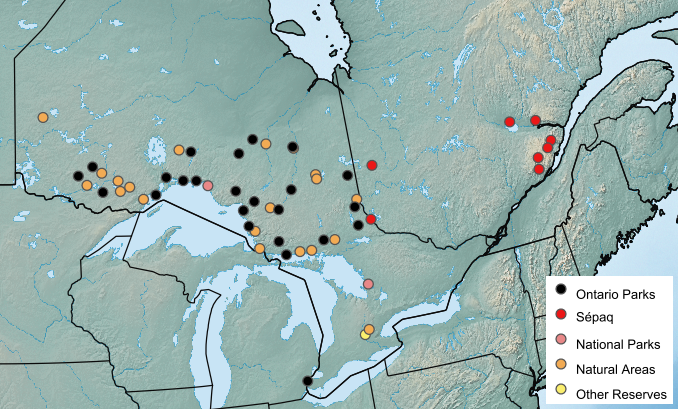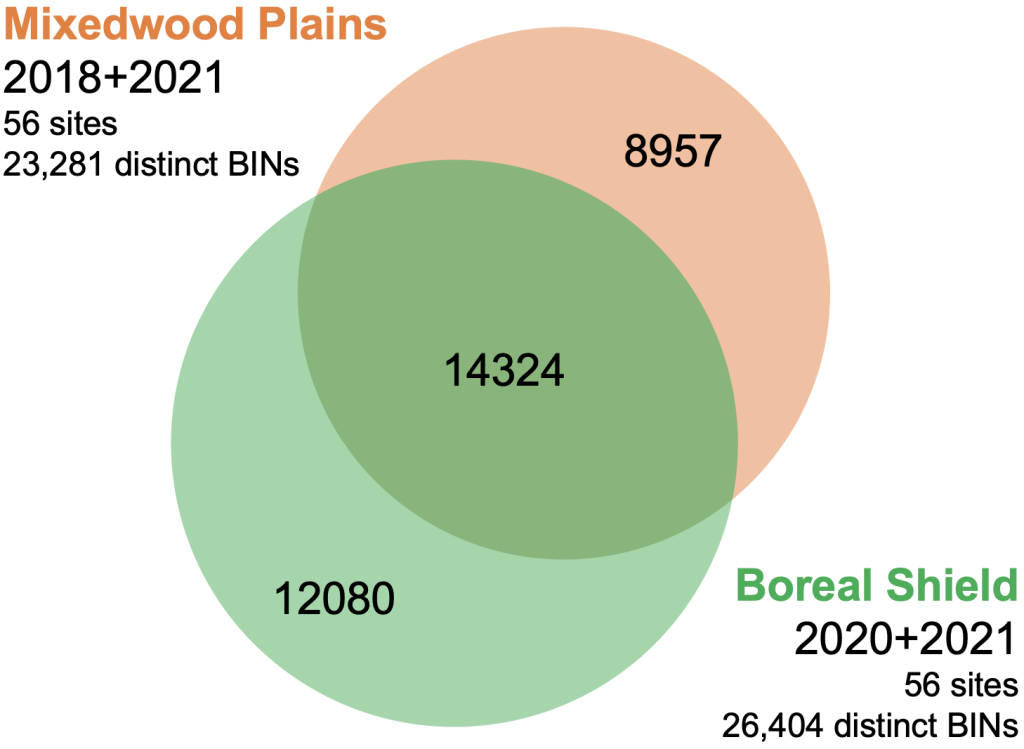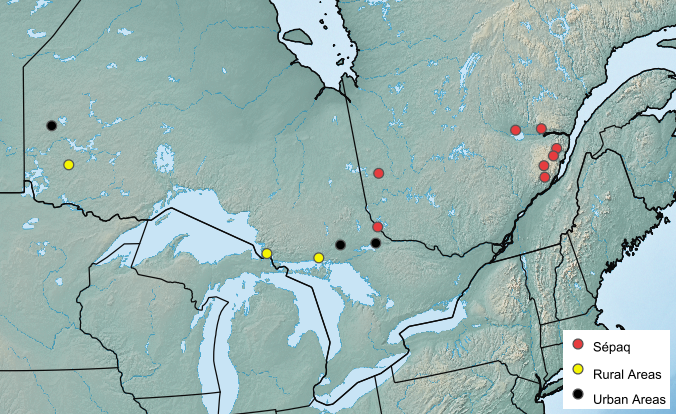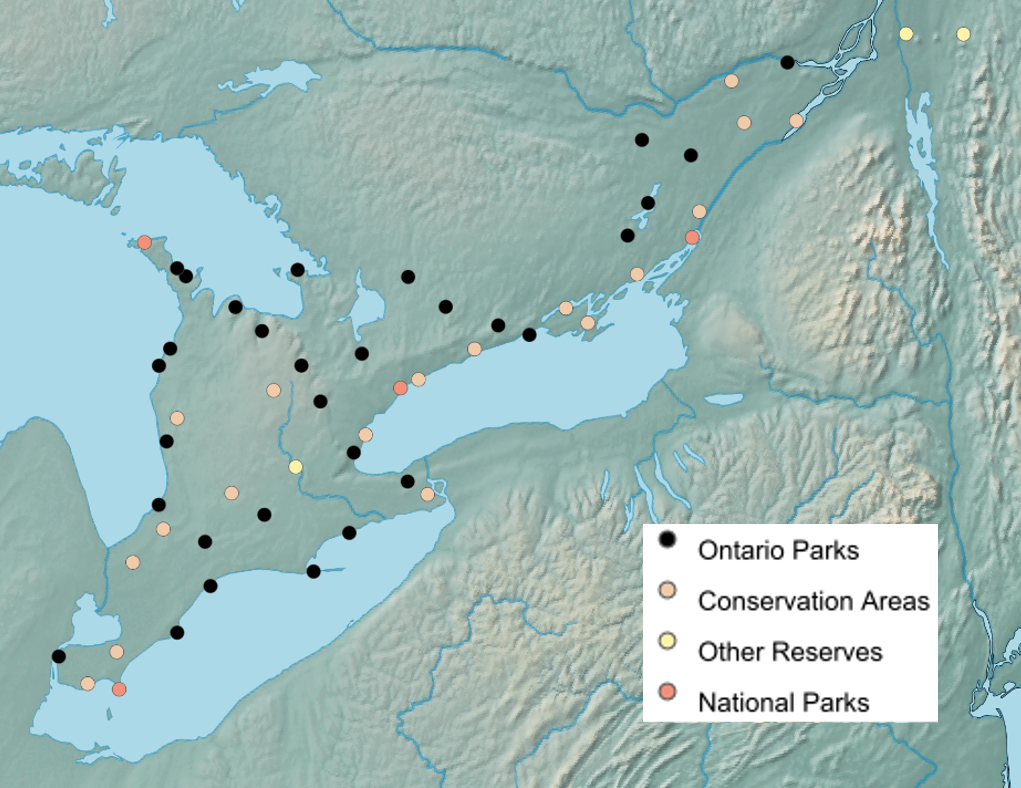Overview
This project is aimed at examining long-term trends in arthropod communities by gathering data at sites that are likely to persist, such as national and provincial protected areas. To collect data from a broad geographic range across the Mixedwood Plains and Boreal Shield ecozones, this project sampled a grand total of 112 sites from 2018-2021. These included 55 Ontario provincial parks, 17 Ontario Conservation Areas, 9 Quebec national parks (Sepaq), 5 Canadian National Parks, and 26 miscellaneous farm, natural, and urban sites.





